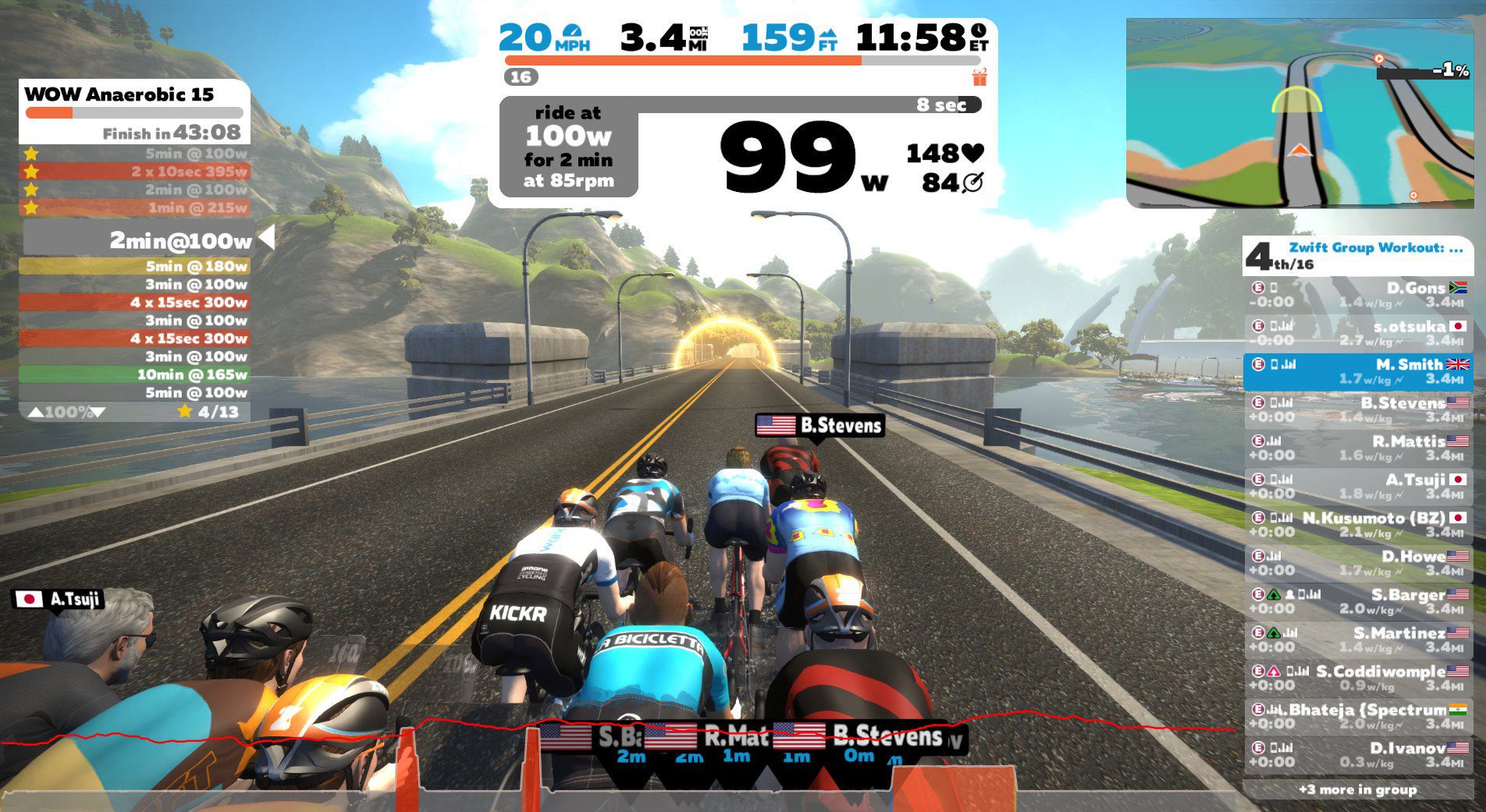How to train to win a Zwift race
With road races cancelled, get your competitive fix on Zwift. Here's everything you need to know to avoid being digitally-dropped

If you intend racing on Zwift it's recommended that you adopt a structured training plan to help tailor your performances. Following a well-structured training program will help take the guesswork out of your riding and ensure you achieve your performance goals. All structured training programs, whether for Zwift races or outdoor racing, will comprise periods or phases targeting specific areas of performance which will help you maximise hours spent training and chasing performance improvements.
If, like much of the world today, you're undertaking voluntary - or enforced - self-isolation, and you want to use your winter's training to tackle a Zwift race today, our guide on how to race on Zwift has everything you need to know.
Periodise your training
Ideally, your training block should last anywhere between 12 and 16 weeks in duration. This is often termed the Macrocycle.
Within this Macrocycle you should have three to four blocks of training, often termed the mesocycle. Within each of these, there will be three or four weeks-long 'Microcycles' of training followed by a recovery week.
Each block should include a high concentration of training sessions targeting similar training adaptations. For instance, during the HIIT phase, you should have two to three high-intensity training sessions per week with sufficient recovery (two to three days) between these sessions.
Coordinating your training in this fashion has been termed block periodization. This has proven to be particularly popular among cyclists and coaches. Block periodisation involves a series of blocks of training which target specific stimulus to improve performance through consecutive development of compatible training characteristics.
Should your training for a Zwift race differ from normal training?
Brad Gouveris, eRacer for Turbo and the Zwift Academy Dream Team, explains that the drafting on Zwift is very much different from on the road. "On the road, you’re able to sit in and save a large amount of energy being pulled along at a relatively low wattage. Zwift racing requires you to be able to sit close to threshold for a large portion of the race and then sustain some high-wattage efforts thereafter."
Get The Leadout Newsletter
The latest race content, interviews, features, reviews and expert buying guides, direct to your inbox!
While the efforts required during a Zwift race may be different from those needed in an outdoor race, this does not mean that your training should differ significantly from your usual training.
The racing on Zwift is very similar to the traditional 'threshold' method of training. This method requires relatively large hours on the bike accompanied by frequent tempo or fast-paced rides (sweet-spot intervals being the favoured type of effort).
While this training method at a glance seems ideal for this type of racing, research has indicated otherwise, with polarised training resulting in greater improvements in all performance measures.
- The benefits of training indoors for an event
- How to get fit fast and smash your goal event
- Beginner's guide to strength training for cyclists
Polarise your training
Polarised training consists of a large percentage of time (approximately 70 to 80% of training time) exercising at low intensity, with little to no time (0 to 10%) at moderate intensity and the remainder (15 to 20%) spent in high intensity.
The last four to six weeks of your training should include high-intensity intervals. The benefit of these HIIT (High-Intensity Interval Training) sessions is the ability to accumulate a greater amount of time at high intensity than a continuous effort.
“Zwift is the ideal place to perform these HIIT sessions for its accuracy and quality of the effort. You are able to sit at the exact prescribed wattage without any interruptions," continues Gouveris.
Try including the following session into your training in preparation for your next race:
8 x 2 minutes maximum intensity (>130% FTP) with 3 minutes recovery between repeats.
It is recommended to perform two HIIT sessions per week. Increasing the number of HIIT sessions won’t always benefit endurance performance. Ensure you allow adequate recovery between sessions.
- 10 seriously effective winter training tips
- Ten essential time-efficient cycling training tips
- How to use indoor training to smash your outdoor riding goals
The finish
"The sprints on Zwift are brutal," Gouveris says. "During last year's Zwift KISS Super League most of the races finished in pure power sprints. It all comes down to who can produce the biggest effort after 45-50 minutes of intense racing.”
The finish is where the training pays off. Utilising the structure provided, you should be able to make sure you have some power left in the tank to execute the race-winning sprint.
Another form of interval that can assist your sprint at the finish as well as improve your performance has been termed Sprint-Interval Training. This consists of eight-to-ten 30-second maximal sprints with four-to-five minutes of recovery between sprints.
Equipment
You'll need an indoor set up to enable you to race on Zwift. Here at Cyclingnews, we've got you covered no matter your budget. For those seeking the ultimate indoor cycling setup, we've put together a guide to the best exercise bikes, which are dedicated stand-alone bikes designed for indoor use only.
If you want to ride your own bike on a high-performance turbo trainer, our guide to the best turbo trainers will help. Otherwise, if you're trying to get onto Zwift on a budget, our guide to the cheapest Zwift setup explains everything you need for a digital bike ride, and the cheapest way to get there.
Jarred Salzwedel completed his Honours degree in Sports Science at the Nelson Mandela Metropolitan University in 2013. His Master's degree focused on investigating training adaptations to differing high-intensity interval training programmes in cyclists.
He has raced both on the road and track at a National level in the Junior ranks which led to his interest in the science behind training and conditioning, as well as his passion to help athletes optimise their performance.
Jarred owns and manages Cycle Dynamic Coaching - a coaching platform that looks after and advises some of South Africa’s top Road and Track cyclists. He has extensive knowledge in exercise physiology having previously focused on the physiological testing of endurance athletes.
